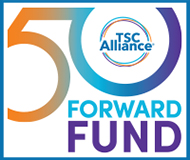
This research paper presents a comprehensive study on epilepsy surgery outcomes of individuals with tuberous sclerosis complex (TSC) using the TSC Alliance’s TSC Natural History Database. The authors found that in real-world U.S. clinical practice, only 13% of patients with TSC and epilepsy undergo epilepsy surgery, and these surgeries were often performed without advanced pre-surgical imaging such as PET, SPECT, or MEG. Nevertheless, the study found that tuberectomy or sublobar resection yielded the highest rates of good seizure outcomes (60.7%) and the most significant reduction in anti-seizure medication use, outperforming both larger resections and palliative procedures like corpus callosotomy
Study Purpose and Research Question
- Understanding Epilepsy Surgery in TSC: The study aimed to analyze epilepsy surgery practices and outcomes in a large group of patients with TSC across the United States. Previous studies were often small, from single tertiary care specialized epilepsy centers, and their findings might not apply broadly to the wider epilepsy surgery community.
- Addressing Generalizability Concerns: The main research question revolved around whether the positive outcomes reported in highly specialized tertiary care centers were generalizable to real-world settings and to provide valuable information for pre-operative counseling for TSC patients considering resective surgery versus palliative procedures like corpus callosotomy.
Methods Used
- Data Source: The study utilized data from the TSC Natural History Database (TSCNHD), which collects information on phenotype, genotype, and clinical data across a national clinic network. This database allowed for the analysis of a large cohort of 2059 individuals with TSC.
- Patient Selection and Data Collection: Patients who underwent epilepsy surgery up to 2017 were included. Data points analyzed included demographics, age at surgery, pre-surgical testing, type of surgery, use of anti-seizure medications (ASM) before and after surgery, and seizure outcome. Seizure outcome was classified using the International League Against Epilepsy (ILAE) criteria into ‘good’, ‘moderate’, and ‘poor’ outcomes.
- Surgical Procedures Analyzed: The study compared resective surgeries (tuberectomy/sublobar resection, lobectomy/multilobar resection, hemispherectomy) aimed at cure or long-term remission. The study used a novel approach in comparing outcome advantage of seizure freedom in patients undergoing resectvie surgery with the intent to cure against a palliative procedure, corpus callosotomy (CC) [6].
Key Findings
- Prevalence of Surgery: Out of 2059 TSC patients in the database, only 229 (13%) underwent epilepsy surgery, with a mean age at surgery of 7.3 years.
- Common Surgery Types: The most frequent resective surgeries were tuberectomy/sublobar resection (44%) and lobectomy/multilobar/hemispherectomy resection (40%). Corpus callosotomy was performed in 10% of those who underwent surgery.
- Pre-surgical Evaluation: The use of advanced non-invasive pre-surgical tests like PET, SPECT, and MEG was low (20-29% of patients), and invasive long-term VEEG was used in 29%.
- Seizure Outcomes: At a mean follow-up of 6.8 years, good seizure outcomes were observed in 41% of those who underwent surgery, moderate outcomes in 24%, and poor outcomes in 35%. This rate for good outcomes was lower in this real-world study compared to previously reported in single or pooled tertiary care center studies (57-69%).
- Effectiveness of Resective Surgeries: Compared to corpus callosotomy (CC), tuberectomy/sublobar resection and lobectomy/multilobar resection were more frequently associated with good seizure outcomes. Tuberectomy/sublobar resections showed the highest rate of good outcomes (60.7%).
- Anti-Seizure Medication Reduction: Tuberectomy/sublobar resection was associated with a significant reduction in anti-seizure medications (ASM) compared to CC, indicating better post-operative control and reduced medication burden.
- Factors Influencing Outcome: Verbal status (higher IQ) and invasive evaluation were associated with better outcomes. The lower seizure freedom rates in this study might be due to the infrequent use of multi-modal pre-surgical evaluations.
Conclusions and Implications
- Real-World Perspective: This study provides a valuable real-world view of epilepsy surgery in TSC, highlighting that outcomes may be less favorable than those reported by highly specialized tertiary centers possibly due to less extensive pre-surgical evaluation.
- Importance of Resective Surgery: Resective surgeries, particularly tuberectomy/sublobar resection, offer the best chance for good seizure outcomes and reduction in anti-seizure medications in TSC patients. This suggests that thorough evaluation for resective surgery should be considered to better define the epileptogenic zone before committing the patient for a large multi-lobar resection or hemispherectomy or palliative procedures such as CC.
- Guidance for Counseling: The findings offer crucial information for counseling patients and their families about realistic expectations for epilepsy surgery in TSC.
- Database Utility: The TSCNHD proves to be an effective model for studying surgical outcomes in rare genetic diseases through collaborative efforts.
Limitations of this Study
- Referral Bias: The TSCNHD collects data from a subset of TSC Clinics across the country, so it does not include data from all centers performing surgery.
- Missing Data: Seizure outcome data was either not clearly categorized in the database or was unavailable for a portion of patients (91 out of 229); missing data fields are a general issue in multi-center databases.
- Variability in Practice: The study reflects real-world practice patterns, which include variations in pre-surgical evaluation, less often use of modern pre-surgical evaluation tools, and potentially surgical techniques and skills across different levels of epilepsy centers, potentially contributing to lower observed seizure freedom rates compared to highly specialized centers.
In summary, this study underscores the effectiveness of resective epilepsy surgery, especially tuberectomy/sublobar resection, for improving seizure control and reducing medication use in TSC patients. The study is counterintuitive to a general argument that larger resections provide better seizure control. This study suggests that a well-defined epileptogenic zone with finite smaller resection provides higher odds of seizure freedom and medication reduction after surgery. The study also highlights the need for comprehensive pre-surgical evaluations in collaboration with tertiary care epilepsy centers to optimize outcomes in a real-world setting and demonstrates the utility of large natural history databases for studying rare conditions.
Lead author: Ajay Gupta, MD, Head, Pediatric Epilepsy, Neurological Institute, Cleveland Clinic, Cleveland, OH, USA, Professor, Department of Neurology, Cleveland Clinic Lerner College of Medicine of the Case Western Reserve University, Cleveland, OH, USA.
Read the full paper here.
